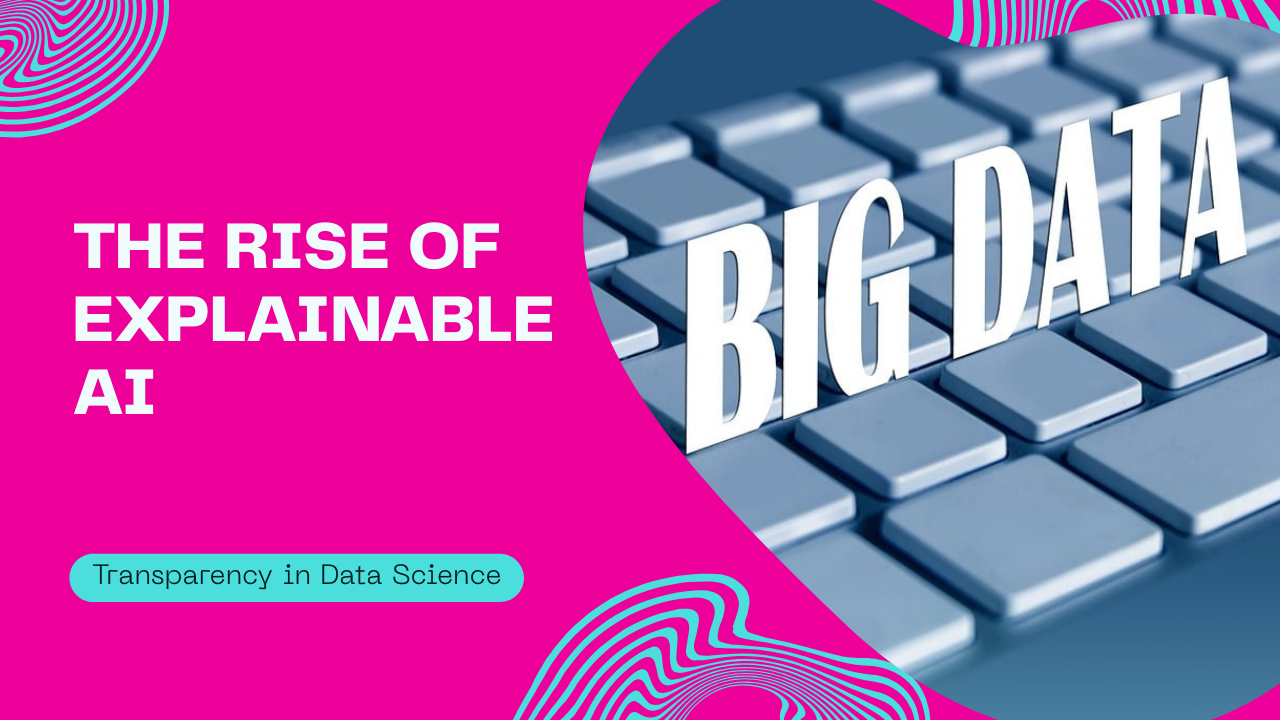Artificial Intelligence is no longer a futuristic concept—it’s woven into our daily lives. From fraud detection systems and recommendation engines to predictive analytics in healthcare, AI models are making decisions that significantly impact individuals and organisations. But as these algorithms become more complex, a crucial question arises: Can we trust something we don’t understand?
Enter Explainable AI (XAI)—an emerging field focused on making AI decisions understandable and transparent to humans. In this blog post, we’ll explore what Explainable AI is, why it matters, and how it’s becoming a game-changer in modern data science.
What Is Explainable AI?
Explainable AI refers to systems and techniques that make the outcomes of AI models more interpretable for humans. While traditional models like linear regression or decision trees are inherently easy to understand, more advanced models—especially deep learning—often function as black boxes.
XAI bridges this gap by answering:
-
Why did the model make a particular prediction?
-
Which inputs had the most influence on the decision?
-
Can the model’s outcome be trusted in sensitive scenarios?
This transparency is vital in high-stakes fields like finance, law, and healthcare, where accountability and ethics are non-negotiable.
AI-Driven Solutions Across Data Science: Transforming Insights into Action in 2025
Why Explainable AI Matters in 2025
1. Regulatory Compliance
Governments and regulatory bodies are tightening their grip on automated decision-making. The EU’s AI Act, for instance, emphasises transparency, risk management, and accountability in AI applications. Explainable AI helps companies remain compliant with such legislation by offering documented reasoning behind AI outcomes.
2. Building User Trust
Users are more likely to trust AI systems that can explain their reasoning. Whether it’s a loan denial, job screening result, or a medical diagnosis, people expect fairness and clarity. XAI provides the “why” behind the decision—making systems more human-centric.
3. Debugging and Model Validation
For data scientists, XAI tools are invaluable for model auditing. They reveal whether the model is learning meaningful patterns or simply memorizing noise. This prevents biases from going unnoticed and improves model generalisation.
Key Techniques Used in Explainable AI
-
LIME (Local Interpretable Model-Agnostic Explanations): Helps explain predictions of any classifier by approximating it locally with an interpretable model.
-
SHAP (SHapley Additive exPlanations): Assigns each feature an importance value for a particular prediction, rooted in cooperative game theory.
-
Saliency Maps: Used in image recognition to show which parts of the input image were most influential in the AI’s decision.
-
Counterfactual Explanations: These show how slight changes in input could lead to different outcomes, helping users understand decision boundaries.
Industries Leading the Way with XAI
-
Healthcare: Doctors use AI-assisted diagnostics but need to understand why the AI suggested a particular diagnosis before trusting it.
-
Finance: Credit scoring and fraud detection models are now required to provide explanations under consumer protection laws.
-
Legal Systems: As AI gets adopted in legal risk assessments and sentencing recommendations, transparency becomes crucial to prevent biased outcomes.
Challenges Ahead
Despite its promise, Explainable AI isn’t without limitations:
-
Interpretations may vary depending on the method used.
-
There’s often a trade-off between model complexity and interpretability.
-
Too much simplification can lead to misleading explanations.
Researchers are now working on causal inference, human-in-the-loop systems, and interactive visualisations to address these concerns and build richer explanations.
The Future of Explainability
The push toward responsible AI is only just beginning. As AI models continue to influence high-stakes decisions, explainability will be a baseline requirement—not a bonus. It will influence everything from data science curricula to corporate ethics policies, shaping the way algorithms are built, deployed, and regulated.
Final Thoughts
Explainable AI is no longer just a niche research topic—it’s a vital trend shaping the future of data science and artificial intelligence. It builds trust, enhances accountability, and ensures that AI serves people, not just predictions.
If you’re a business owner, developer, or data scientist, investing in explainability isn’t just good practice—it’s fast becoming a legal and ethical necessity.






